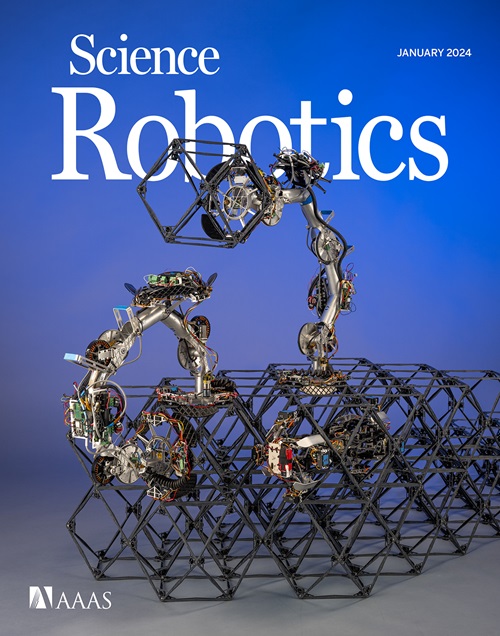AI in therapeutic and assistive exoskeletons and exosuits: Influences on performance and autonomy
IF 27.5
1区 计算机科学
Q1 ROBOTICS
引用次数: 0
Abstract
Therapeutic and assistive exoskeletons and exosuits show promise in both clinical and real-world settings. Improving their autonomy can enhance usability, effectiveness, and cost efficiency. This Review presents a generic control framework for autonomous operation of upper and lower limb devices and reviews current advancements and future directions. We highlight how data-driven machine learning aids in intention recognition, synchronization, patient assessment, and task-agnostic control. In addition, we discuss how reinforcement learning optimizes control policies through digital human twins and how generative AI supports therapy planning and patient engagement. Richer patient-specific data and more accurate digital twins are needed for clinical validation and widespread deployment.人工智能在治疗和辅助外骨骼和外骨骼:对性能和自主性的影响
治疗性和辅助性外骨骼和外骨骼在临床和现实环境中都显示出前景。提高它们的自主性可以增强可用性、有效性和成本效率。本文介绍了一种用于上肢和下肢设备自主操作的通用控制框架,并综述了目前的进展和未来的发展方向。我们强调了数据驱动的机器学习在意图识别、同步、患者评估和任务不可知控制方面的帮助。此外,我们还讨论了强化学习如何通过数字人类双胞胎优化控制策略,以及生成式人工智能如何支持治疗计划和患者参与。临床验证和广泛部署需要更丰富的患者特定数据和更准确的数字双胞胎。
本文章由计算机程序翻译,如有差异,请以英文原文为准。
求助全文
约1分钟内获得全文
求助全文
来源期刊

Science Robotics
Mathematics-Control and Optimization
CiteScore
30.60
自引率
2.80%
发文量
83
期刊介绍:
Science Robotics publishes original, peer-reviewed, science- or engineering-based research articles that advance the field of robotics. The journal also features editor-commissioned Reviews. An international team of academic editors holds Science Robotics articles to the same high-quality standard that is the hallmark of the Science family of journals.
Sub-topics include: actuators, advanced materials, artificial Intelligence, autonomous vehicles, bio-inspired design, exoskeletons, fabrication, field robotics, human-robot interaction, humanoids, industrial robotics, kinematics, machine learning, material science, medical technology, motion planning and control, micro- and nano-robotics, multi-robot control, sensors, service robotics, social and ethical issues, soft robotics, and space, planetary and undersea exploration.
 求助内容:
求助内容: 应助结果提醒方式:
应助结果提醒方式:


